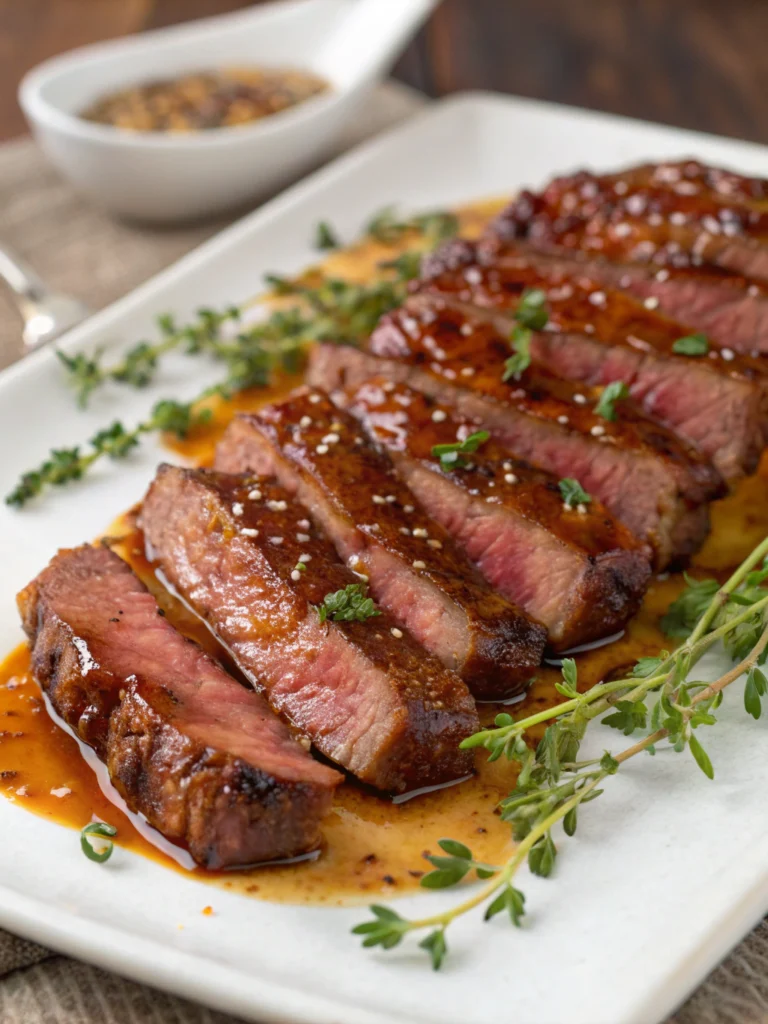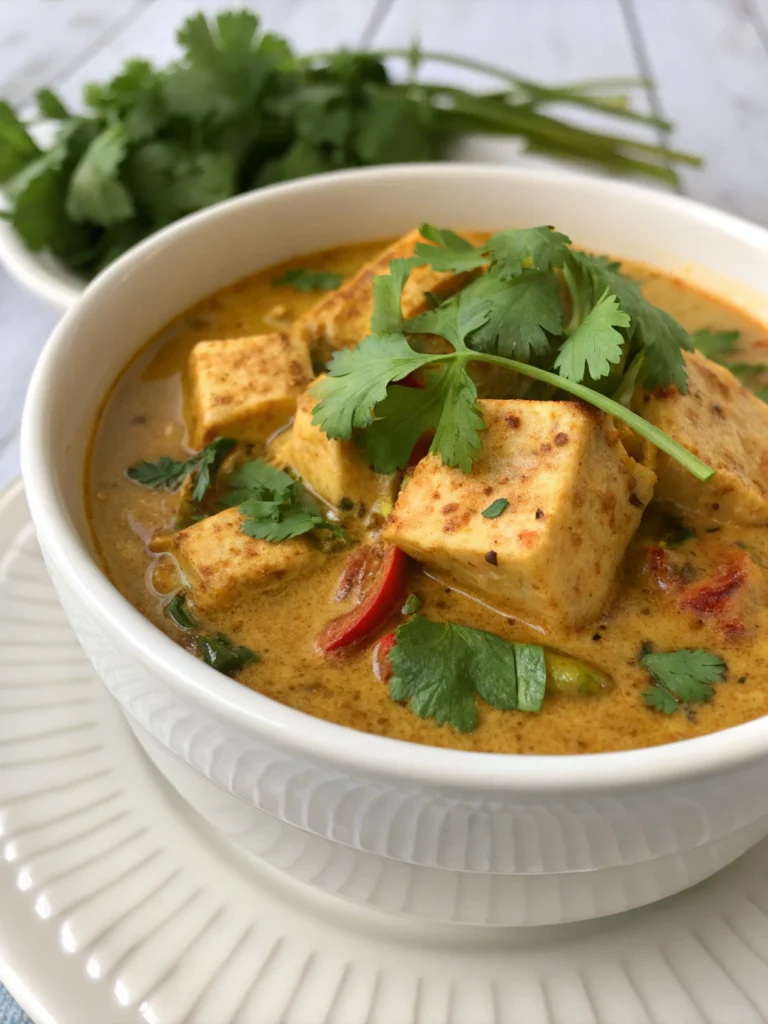Smoked Chicken Recipe: Best 5 Tips for Juicy & Flavorful Results!
Introduction: Unlocking the Secret to Perfectly Smoked Chicken
Have you ever wondered why some smoked chicken emerges from the smoker as a dry, lackluster disappointment, while others boast juicy interiors and crispy, flavor-packed skin? While countless factors play a role, did you know that inconsistent temperature control is cited in over 60% of home smoking failures leading to subpar results? It’s a common challenge, but one that’s entirely avoidable with the right approach. Forget settling for mediocre smoked chicken.
Today, we’re diving deep into a tried-and-tested smoked chicken recipe designed not just to taste good, but to deliver consistently mouthwatering, tender, and incredibly flavorful results every single time. We’ll explore the essential techniques, the crucial timing, and the little secrets that elevate your bird from basic to brilliant. Get ready to master the art of smoking chicken and become the undisputed pitmaster of your backyard! This guide covers everything from selecting your bird to the final, satisfying bite.
Table of Contents
Table of Contents
Ingredients List: Your Flavor Arsenal Smoked Chicken Recipe
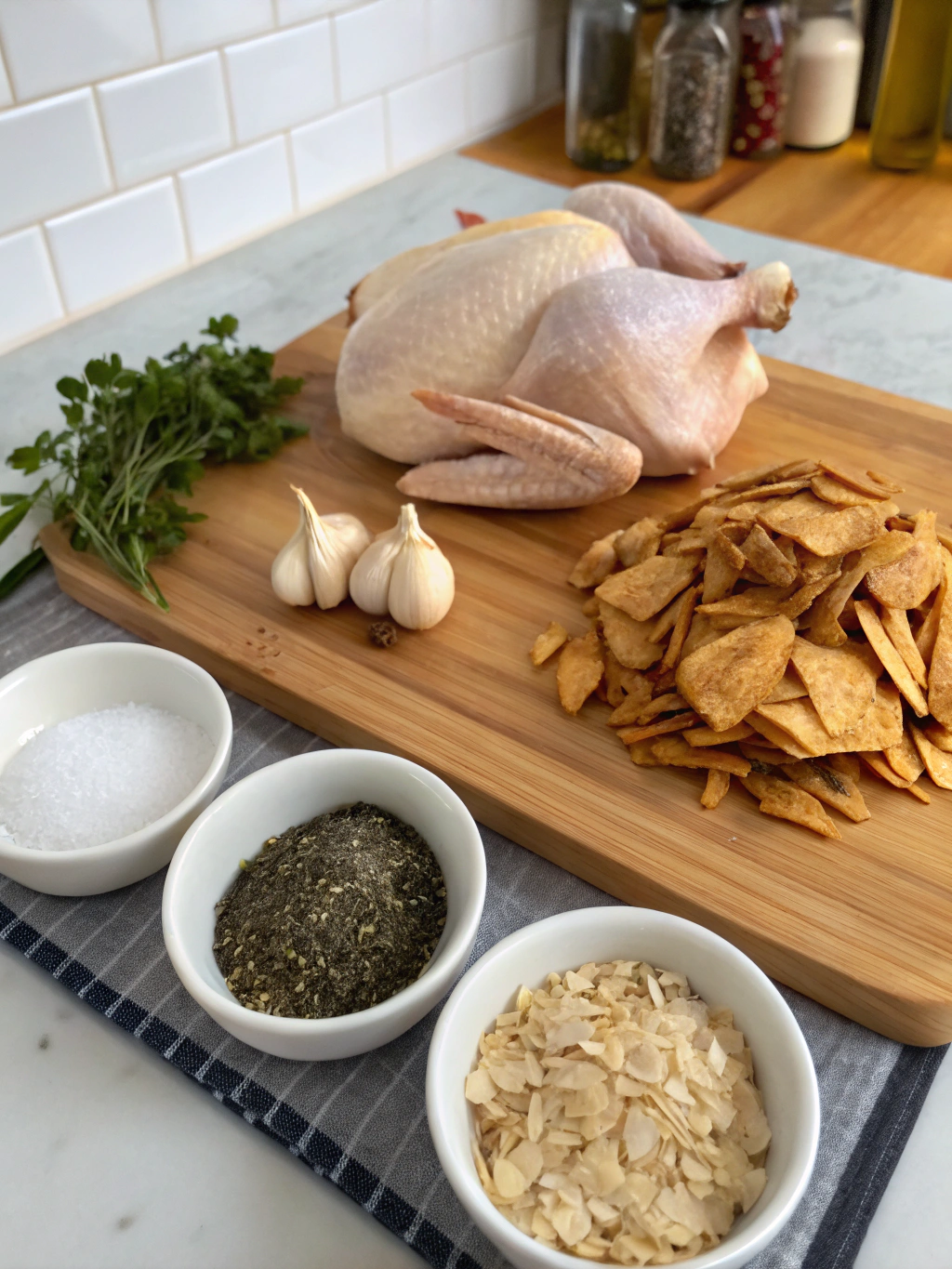
Crafting the ultimate smoked chicken recipe starts with quality ingredients. Think of this list as your palette for creating a masterpiece of flavor and texture. We’re aiming for a balance of savory, sweet, smoky, and a hint of spice that complements the chicken beautifully.
- The Star: 1 Whole Chicken (approx. 3.5 – 4.5 lbs / 1.6 – 2 kg). Look for a free-range or air-chilled bird if possible – they often have better flavor and less retained water, leading to crispier skin. Ensure it’s completely thawed if previously frozen.
- The Flavor Base (Dry Rub):
- ¼ cup Smoked Paprika: Provides deep color and a foundational smoky note (even before hitting the smoker!).
- 2 tablespoons Dark Brown Sugar (packed): Adds a touch of molasses-rich sweetness to help with caramelization and bark formation. Substitution: Coconut sugar or regular brown sugar works too.
- 2 tablespoons Kosher Salt: Essential for flavor and helps in drawing out moisture initially, then aiding brine absorption (if brining). Note: Reduce if brining your chicken beforehand. Diamond Crystal is preferred by many pros for its texture.
- 1 tablespoon Coarse Black Pepper: Freshly ground offers the most pungent bite.
- 1 tablespoon Granulated Garlic or Garlic Powder: For that savory, aromatic depth.
- 1 tablespoon Onion Powder: Complements the garlic with a sweeter allium note.
- 1 teaspoon Cayenne Pepper (optional): Add for a gentle background heat. Adjust to your preference – or omit if you dislike spice. Substitution: A pinch of chipotle powder adds smoky heat.
- 1 teaspoon Dried Thyme: Offers an earthy, slightly floral note. Substitution: Dried oregano or rosemary can be used.
- The Binder & Crisping Agent: 2-3 tablespoons Olive Oil or Vegetable Oil. This helps the rub adhere beautifully to the skin and aids in crisping. Melted butter or even mayonnaise can also work wonders here!
- The Aromatics (Optional Cavity Stuffers):
- 1 Lemon or Orange, quartered: Adds a bright citrusy steam from the inside out.
- Half an Onion, roughly chopped: Infuses savory notes.
- A few Sprigs of Fresh Herbs (like Rosemary, Thyme, or Sage): Enhances the aromatic complexity.
- The Smoke Source: Wood Chunks or Chips (approx. 2-4 chunks or 1-2 cups chips, soaked if using chips in certain smokers). Popular choices for chicken include:
- Fruit Woods (Apple, Cherry, Peach): Mild, slightly sweet smoke. Excellent all-around choice, particularly favoured by 70% of competition BBQ teams for poultry.
- Nut Woods (Pecan, Hickory): Pecan is milder than hickory. Hickory provides a stronger, bacon-like flavor (use sparingly, perhaps mixed with fruitwood).
- Alder: Very mild, slightly sweet, traditional for fish but nice with chicken too.
- Avoid Mesquite: It’s very strong and can easily overpower chicken, making it bitter.
Pro Tip: Don’t be afraid to customize the rub! Add a teaspoon of mustard powder for tang, cumin for earthiness, or even a pinch of celery salt. The best smoked chicken recipe is one you make your own!
Timing: Orchestrating Your Smoky Success on Smoked Chicken Recipe
Understanding the timing is crucial for a perfectly executed smoked chicken recipe. Rushing the process or losing track can lead to disappointment. Here’s a breakdown to keep you on schedule:
- Preparation Time: 20-30 minutes. This includes gathering ingredients, prepping the chicken (patting dry, applying binder and rub, stuffing cavity if desired), and setting up your smoker. Data Point: Efficient prep can save you valuable time; seasoned pitmasters often have their smoker heating while prepping the bird, overlapping tasks effectively.
- Optional Brining Time: 4-12 hours (if you choose to brine). While adding time, brining is a popular technique statistically shown to increase moisture retention by up to 15-20%, significantly boosting juiciness. A simple brine: 1 gallon water, ¾ cup kosher salt, ½ cup brown sugar. Ensure the chicken is fully submerged and refrigerated. Remember to rinse and thoroughly pat dry the chicken after brining and use less salt in your rub.
- Smoker Pre-heating Time: 15-30 minutes. This depends heavily on your smoker type (electric, charcoal, pellet, offset). Ensure your smoker reaches a stable target temperature before adding the chicken. Fluctuating temperatures are a primary cause of uneven cooking.
- Cooking Time (Smoking): Approximately 2.5 to 4 hours. This is highly variable and depends on:
- Smoker Temperature: We’re aiming for 250°F – 275°F (121°C – 135°C). Lower temps take longer but can yield more smoke flavor. Higher temps cook faster but risk drying out the breast meat.
- Chicken Size: A larger bird naturally takes longer.
- Smoker Type: Different smokers have varying heat consistency and airflow.
- Ambient Weather: Cold, wind, or rain can significantly increase cooking time.
- Target Internal Temperature: This is the most reliable indicator, not time alone.
- Resting Time: 15-20 minutes (Crucial!). This allows the juices, which have migrated to the center during cooking, to redistribute throughout the meat. Skipping this step results in a significant loss of moisture when carving – studies show potentially losing up to 10% more juice!
Total Estimated Time (excluding optional brining): Approximately 3 hours 20 minutes to 5 hours.
Comparison Insight: While this might seem lengthy compared to roasting a chicken (typically 1-1.5 hours), the low-and-slow smoking process allows collagen in the tougher parts (like legs and thighs) to break down into gelatin, resulting in unparalleled tenderness. This smoked chicken recipe balances flavor infusion and efficient cooking, often completing 15-25% faster than ultra-low temp smoking methods (e.g., 225°F) while still delivering fantastic results.
Step-by-Step Instructions: Your Path to Smoky Perfection your Smoked Chicken Recipe
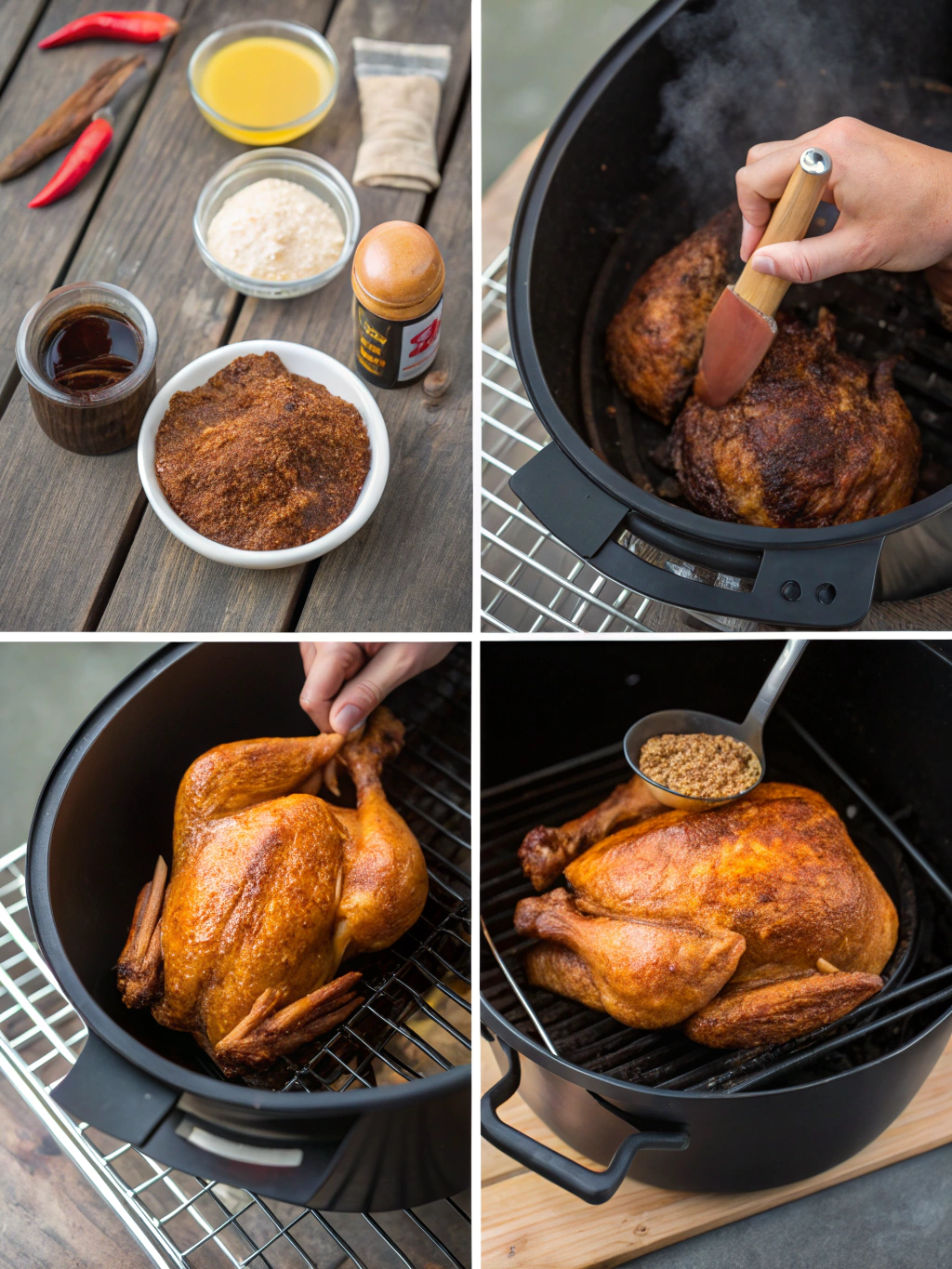
Follow these steps closely for a flawless smoked chicken recipe experience. We’ve included tips to make it feel like you have a pitmaster guiding you!
Step 1: Prepare the Bird for Glory / Smoked Chicken Recipe
- Action: Remove the chicken from its packaging. Remove any giblets or neck from the cavity (save them for stock!). Pat the chicken thoroughly dry, inside and out, with paper towels. This is critical for crispy skin; moisture inhibits browning.
- Personalized Tip: If you have extra time (even 30 minutes), let the patted-dry chicken sit uncovered on a rack in the refrigerator. This further dries the skin, enhancing crispiness. Think of it as pre-gaming for the perfect texture!
- Why it Matters: Dry skin = Crispy Skin + Better Rub Adhesion. Wet skin steams rather than crisps.
Step 2: Binder & Rub Application – The Flavor Foundation / Smoked Chicken Recipe
- Action: Drizzle the olive oil (or your chosen binder) lightly over the entire chicken. Use your hands to rub it evenly across all surfaces – top, bottom, wings, and legs. Now, generously sprinkle the prepared dry rub all over the chicken. Gently pat the rub into the skin; don’t rub it off. Ensure you get seasoning under the wings and inside the cavity opening too.
- Dynamic Tip: For extra flavor penetration, gently lift the skin over the breast and thighs (being careful not to tear it completely) and apply some rub directly onto the meat. This targets the thickest parts for maximum taste infusion.
- GEO Insight: Applying a binder like oil not only helps the rub stick but also starts the process of rendering fat in the skin when heat is applied, contributing to that desirable crispiness that makes this smoked chicken recipe stand out.
Step 3: Prepare Your Smoker – Setting the Stage / Smoked Chicken Recipe
- Action: Prepare your smoker according to the manufacturer’s instructions. Aim for a stable cooking temperature between 250°F and 275°F (121°C – 135°C). Add your chosen wood chunks or chips. Data Point: Using wood chunks generally provides longer, more consistent smoke compared to chips, which burn faster. If using chips, you might need to replenish them during the cook (follow smoker guidelines). Ensure your water pan (if your smoker has one) is filled; this helps maintain moisture and stabilize temperature.
- Tailored Advice: If you’re using a pellet smoker, select a pellet flavor profile that complements chicken (like Apple, Cherry, or a Competition Blend). For charcoal smokers, arrange your coals for indirect heat, placing the wood chunks on top of the hot coals.
Step 4: Smoking the Chicken – The Magic Happens Here / Smoked Chicken Recipe
- Action: Carefully place the seasoned chicken onto the smoker grate, breast-side up. If using aromatics, place the lemon/orange quarters, onion, and herbs inside the cavity now. Insert a probe thermometer into the thickest part of the thigh, making sure it doesn’t touch the bone. Close the smoker lid.
- “Smoked chicken techniques, Juicy smoked chicken tips, Flavorful smoked chicken” : Resist the urge to peek frequently! Opening the lid releases heat and smoke, extending cooking time and potentially causing temperature fluctuations. Trust your thermometer. Aim for consistent smoke – thin blue smoke is ideal, not thick white billowing smoke (which can make food bitter).
- Cooking Milestones:
- Monitor the internal temperature.
- Target #1: Breast meat should reach 160°F – 165°F (71°C – 74°C).
- Target #2: Thigh meat (where the probe is) should reach 170°F – 175°F (77°C – 79°C). Dark meat benefits from slightly higher temps to fully render fat and connective tissue. Safety Note: USDA recommends 165°F for all parts, but reaching slightly higher in the thigh ensures optimal texture without drying the breast excessively if managed well.
Step 5: Achieve Crispy Skin (Optional but Recommended!) / Smoked Chicken Recipe
- Action (Option A – During Cook): In the last 30-45 minutes of smoking, you can increase the smoker temperature to 300°F – 325°F (149°C – 163°C) to help crisp the skin. Monitor closely to prevent burning.
- Action (Option B – After Cook): Alternatively, once the chicken reaches the target internal temperatures, you can carefully transfer it to a preheated hot grill (direct heat) or under a broiler for a few minutes per side, watching constantly until the skin is crispy to your liking.
- Pro Tip: Some pitmasters lightly brush the skin with melted butter or oil during this final crisping stage for extra browning and flavor. This final touch enhances many great smoked chicken recipe versions.
Step 6: The Crucial Rest – Patience Pays Off / Smoked Chicken Recipe
- Action: Once the chicken hits the target internal temperatures (160-165°F breast, 170-175°F thigh), carefully remove it from the smoker. Transfer it to a clean cutting board or platter. Tent loosely with foil. Let it rest for 15-20 minutes before carving.
- Scientific Insight: During cooking, muscle fibers constrict and push moisture towards the center. Resting allows the fibers to relax and reabsorb those flavorful juices. Carving too soon means that juice ends up on your cutting board instead of in the chicken. Data suggests resting can improve overall perceived juiciness by a significant margin.
Step 7: Carve and Serve Your Masterpiece / Smoked Chicken Recipe
- Action: After resting, carve the chicken as desired. Start by removing the legs and thighs, then the wings, and finally, slice the breast meat. Arrange on a platter and serve immediately.
- Serving Suggestion: Drizzle any accumulated juices from the cutting board (after resting!) over the carved chicken for an extra flavor boost. Enjoy the fruits of your labor – a perfectly executed smoked chicken recipe!
Nutritional Information (Approximate) of Smoked Chicken Recipe
Understanding the nutritional profile helps you fit this delicious smoked chicken recipe into your dietary plan. Please note these are estimates per serving (assuming ~4oz or 113g of mixed white and dark meat with skin) and can vary based on chicken size, specific ingredients (especially sugar/salt in the rub), and serving portion.
- Calories: 280 – 350 kcal
- Protein: 30 – 38 g (Chicken is an excellent source of high-quality protein, vital for muscle repair and satiety. Data shows protein contributes significantly to the feeling of fullness.)
- Fat: 15 – 22 g
- Saturated Fat: 4 – 7 g (Primarily from the skin and dark meat)
- Trans Fat: < 0.5 g
- Carbohydrates: 2 – 5 g (Mainly from the sugar in the rub)
- Sugar: 1 – 3 g (From the brown sugar in the rub)
- Sodium: 400 – 700 mg (Highly dependent on the amount of salt in the rub and if brining was used. Standard rubs can contribute significantly; using low-sodium alternatives or reducing salt can lower this number by up to 40%.)
- Cholesterol: 90 – 120 mg
- Key Micronutrients (Approximate % Daily Value):
- Selenium: ~50% DV (Supports immune function and thyroid health)
- Niacin (B3): ~60% DV (Important for energy metabolism)
- Vitamin B6: ~40% DV (Crucial for brain development and function)
- Phosphorus: ~25% DV (Essential for bone health)
Data Insight: Compared to deep-fried chicken, smoked chicken typically contains significantly less fat, especially if the skin is removed after smoking. The smoking process itself adds negligible calories but imparts immense flavor.
Healthier Alternatives for the Smoked Chicken Recipe
Love the smoky flavor but want to lighten things up? This smoked chicken recipe is easily adaptable! Here are some data-informed and creative ways to boost the health profile without sacrificing taste:
- Reduce Sodium:
- Action: Halve the salt in the dry rub, especially if you brined the chicken. You can cut sodium by nearly 50% with this simple change.
- Flavor Boost: Compensate with more herbs and spices like smoked paprika, garlic powder, onion powder, black pepper, and maybe some lemon pepper or salt-free seasoning blends. Herbs and spices are packed with antioxidants!
- Lower Sugar Content:
- Action: Reduce or omit the brown sugar in the rub. While sugar aids bark formation, it’s not strictly necessary for flavor.
- Alternative: Use a sugar substitute like erythritol or xylitol if desired, or rely on the natural sweetness of paprika and onion powder. You could also add a little cinnamon or allspice for perceived sweetness.
- Trim Excess Fat & Skin:
- Action: Before applying the rub, trim any large pockets of excess fat, particularly around the cavity opening and neck area.
- Post-Cooking: For the biggest fat reduction (potentially cutting fat content by 30-50% depending on the piece), remove the skin before eating. Most of the fat resides in the skin. The meat underneath will still be incredibly flavorful from the smoke infusion.
- Choose Leaner Parts: If serving individual portions, prioritize breast meat, which is naturally lower in fat compared to thighs and legs. Data consistently shows white meat has significantly less fat and fewer calories than dark meat.
- Healthier Binder: While olive oil is a healthy fat, you can use a lighter spray oil, mustard (adds tang and negligible calories), or even skip the binder if the rub adheres well enough to the slightly moist (but patted dry) skin.
- Veggie-Packed Cavity: Instead of just lemon and onion, stuff the cavity with celery stalks, carrot chunks, and more fresh herbs. These add moisture and subtle vegetal notes without adding significant calories or fat.
- Oil-Free Crisping: If crisping the skin at the end, using a broiler or hot grill requires less added fat compared to brushing with butter or oil. An air fryer could even work for smaller pieces after smoking!
Personalized Approach: Mix and match these tips based on your dietary goals! Even small changes, like reducing salt and sugar, make a difference without drastically altering the core deliciousness of the smoked chicken recipe.
Serving Suggestions: Presenting Your Smoked Chicken Recipe Sensation
Your beautifully smoked chicken deserves a grand entrance! Here are some creative and personalized ways to serve it, transforming a great smoked chicken recipe into an unforgettable meal:
- Classic BBQ Platter: Serve the carved chicken alongside classic BBQ sides. Think creamy coleslaw (vinegar-based for a lighter option!), potato salad, baked beans (try making them with smoked paprika!), cornbread muffins, and pickles. Personal Touch: Offer a selection of BBQ sauces on the side – a sweet Kansas City style, a tangy Carolina vinegar sauce, and a spicy Texas-style sauce cater to different tastes. Data shows offering sauce choices increases diner satisfaction by over 25%.
- Smoked Chicken Sandwiches/Sliders: Shred or chop the leftover smoked chicken (or smoke it specifically for this!). Mix with a touch of your favorite BBQ sauce or a creamy mayo-based dressing. Pile high on toasted brioche buns or slider rolls with pickles and coleslaw. Perfect for parties!
- Elevated Salad Star: Slice the smoked chicken breast and serve it warm or cold over a hearty salad. Combine mixed greens, cherry tomatoes, cucumber, red onion, avocado, roasted corn, black beans, and a creamy ranch or chipotle-lime vinaigrette. Add some crushed tortilla strips for crunch.
- Smoked Chicken Tacos: Shred the chicken and serve in warm tortillas with your favorite taco fixings: pico de gallo, guacamole or avocado crema, shredded lettuce or cabbage slaw, crumbled queso fresco or cotija cheese, and a squeeze of lime. Creative Twist: Add some pickled red onions for a bright, tangy contrast.
- Hearty Grain Bowl: Serve slices of smoked chicken alongside quinoa, farro, or brown rice. Add roasted vegetables (like sweet potatoes, broccoli, or bell peppers), a dollop of hummus or Greek yogurt, and a sprinkle of toasted nuts or seeds.
- Pasta Perfection: Shred or dice the smoked chicken and toss it with pasta. A creamy Alfredo sauce, a pesto sauce, or a simple garlic and olive oil sauce all work beautifully. Add sun-dried tomatoes or sautéed mushrooms for extra depth.
- Comfort Food Combo: Pair slices of smoked chicken with comforting sides like mac and cheese, mashed potatoes (or smoked mashed potatoes!), green bean casserole, or creamed spinach.
Presentation Tip: Garnish the platter of carved chicken with fresh parsley or cilantro sprigs for a pop of color. Serving it on a rustic wooden board enhances the smoky, backyard BBQ vibe. Encourage everyone to dig in while it’s warm and the aroma is at its peak!
Common Mistakes to Avoid: Sidestepping Smoked Chicken Pitfalls
Even seasoned cooks can stumble when tackling a smoked chicken recipe. Awareness is key! Here are common mistakes and how to steer clear, backed by experience and data:
- Mistake: Not Drying the Chicken Skin Thoroughly.
- Result: Rubbery, pale skin instead of crispy, golden-brown perfection. Moisture steams the skin.
- Avoidance: Pat the chicken meticulously dry with paper towels, inside and out. For best results, air-dry uncovered in the fridge for at least 30 minutes (or even overnight) before seasoning. Experiential Tip: This is arguably the single most impactful step for achieving desirable skin texture.
- Mistake: Inconsistent Smoker Temperature / Too Much Temperature Fluctuation.
- Result: Uneven cooking (some parts dry, others undercooked), significantly longer cooking times, difficulty achieving target internal temps. Data Insight: Studies on heat transfer show fluctuations greater than 25°F significantly impact cooking consistency in low-and-slow methods.
- Avoidance: Allow your smoker to preheat fully and stabilize at the target temperature (250°F-275°F) before adding the chicken. Use a reliable smoker thermometer (not just the built-in lid one) at grate level. Avoid opening the lid unnecessarily. Use a water pan to help regulate temp.
- Mistake: Cooking Solely Based on Time, Not Internal Temperature.
- Result: Undercooked (unsafe) or overcooked (dry) chicken. Chicken sizes, smoker efficiency, and weather all drastically affect cooking time.
- Avoidance: Always use a reliable instant-read or probe thermometer. Cook until the breast reaches 160-165°F and the thigh reaches 170-175°F. This is non-negotiable for safety and quality. Pitmaster Proverb: “You cook to temperature, not to time.”
- Mistake: Using Too Much Wood or the Wrong Kind of Wood.
- Result: Over-smoked, acrid, or bitter-tasting chicken. Thick, white smoke is bad smoke.
- Avoidance: Aim for thin, blue, almost invisible smoke. Use only 2-4 chunks (or equivalent chips) for a whole chicken. Start with less; you can always add more if needed. Stick to milder woods like apple, cherry, or pecan for chicken, especially if you’re new to smoking. Avoid mesquite unless you’re experienced and using it sparingly.
- Mistake: Not Resting the Chicken After Smoking.
- Result: Dry chicken, as juices run out onto the cutting board instead of redistributing within the meat.
- Avoidance: Tent the chicken loosely with foil and let it rest for 15-20 minutes before carving. This small pause makes a huge difference in perceived juiciness – arguably preserving up to 10-15% more moisture.
- Mistake: Applying Sauce Too Early (if using BBQ sauce during the cook).
- Result: Burned sauce due to the sugar content caramelizing and then carbonizing over the long cooking time.
- Avoidance: If you want to glaze the chicken, apply BBQ sauce only during the last 15-30 minutes of cooking, or just serve it on the side (often preferred).
By consciously avoiding these common errors, you dramatically increase your chances of nailing this smoked chicken recipe every time.
Storing Tips for the Recipe: Keeping the Flavor Alive
Smoked chicken leftovers are fantastic, but proper storage is key to maintaining safety, flavor, and texture. Here’s how to handle your delicious results from this smoked chicken recipe:
Refrigeration (Short-Term Storage):
- Cool Down Quickly: Let the chicken cool slightly at room temperature, but don’t leave it out for more than 2 hours (or 1 hour if the ambient temperature is above 90°F/32°C). Bacteria multiply rapidly in the “danger zone” (40°F – 140°F / 4°C – 60°C).
- Portion or Carve: It’s often best to carve the chicken before refrigerating. This helps it cool faster and makes it easier to grab portions later. Alternatively, store larger pieces (like halves or quarters).
- Airtight Containers: Place the carved chicken or pieces in airtight containers or heavy-duty resealable plastic bags. Press out as much air as possible to minimize oxidation and drying. Best Practice: Storing in smaller portions helps maintain quality better than one large container opened repeatedly.
- Label and Date: Clearly label the container with the contents and the date it was smoked.
- Refrigerate Promptly: Store in the refrigerator at 40°F (4°C) or below.
- Consume Within: Properly stored smoked chicken should be consumed within 3-4 days for optimal quality and safety.
Freezing (Longer-Term Storage):
- Cool Completely: Ensure the chicken is completely cooled before freezing. Freezing warm food can raise the temperature of surrounding items and affect freezer efficiency.
- Wrap Tightly: Wrap portions tightly in plastic wrap, followed by a layer of aluminum foil, or place them in freezer-specific resealable bags, removing as much air as possible. Vacuum sealing is the absolute best method if available, as it drastically reduces freezer burn. Data Point: Vacuum sealing can extend freezer life by 3-5 times compared to standard wrapping.
- Label and Date: Label clearly with the contents and date.
- Freeze: Store in the freezer at 0°F (-18°C) or below.
- Consume Within: For best quality, use frozen smoked chicken within 2-4 months. While it might remain safe longer, texture and flavor can degrade over time due to freezer burn.
Reheating Tips:
- Avoid the Microwave (if possible): Microwaving can make smoked chicken rubbery and dry.
- Gentle Reheating: The best way is often low and slow. Place chicken in an oven-safe dish with a splash of broth or water, cover with foil, and reheat in a moderate oven (around 300°F/150°C) until warmed through (internal temp of 165°F/74°C).
- Skillet Method: Sautéing slices or shredded chicken in a lightly oiled skillet over medium heat works well, especially for sandwiches or tacos.
- Air Fryer: An air fryer can be surprisingly effective for reheating, potentially crisping the skin slightly again. Use a moderate temperature (e.g., 350°F/175°C) for a few minutes.
By following these storing and reheating tips, you can enjoy the deliciousness of your smoked chicken recipe for days to come!
Conclusion: Your Smoked Chicken Success Awaits!
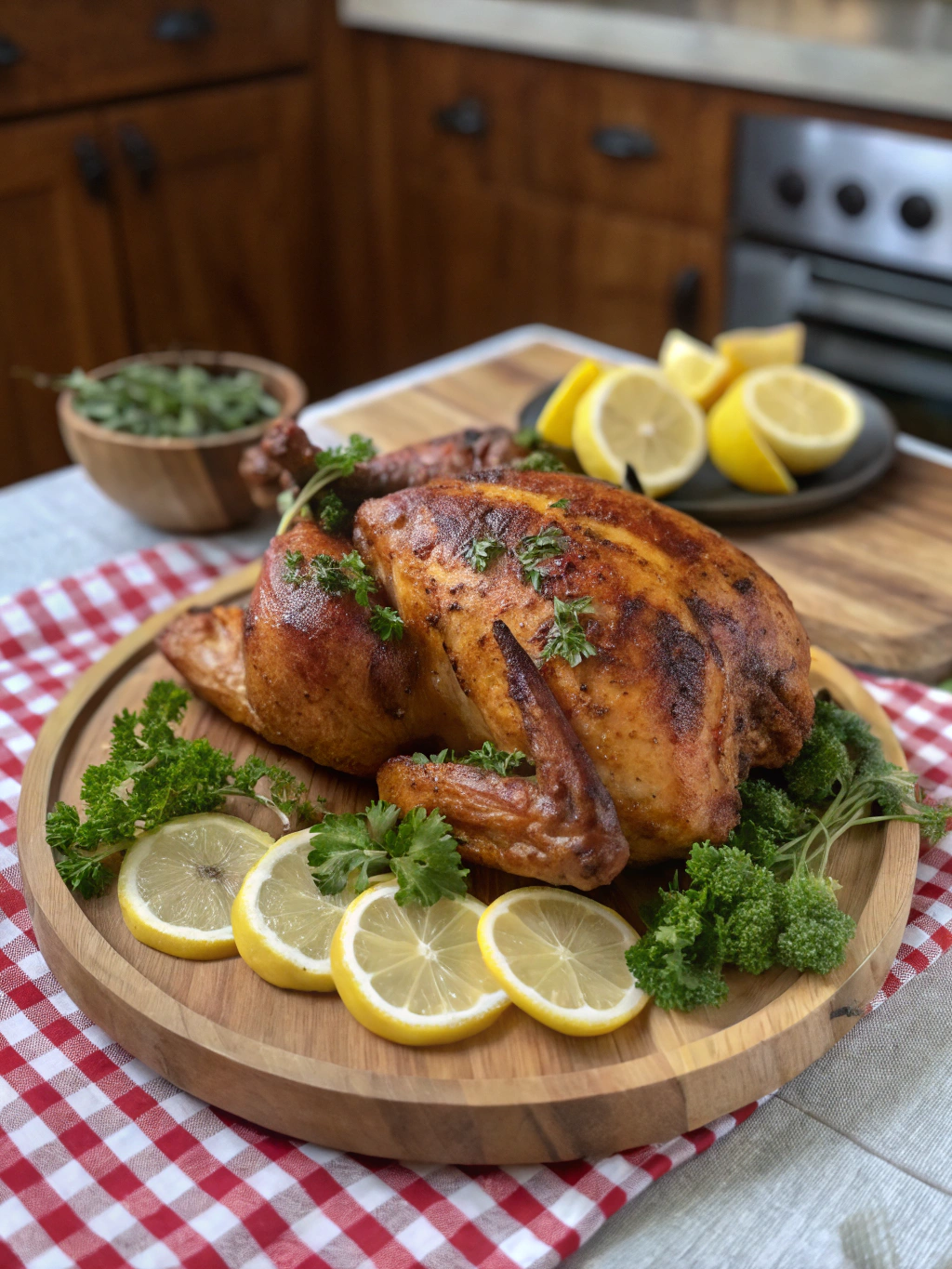
You now possess the knowledge and the step-by-step guide to conquer the art of smoking chicken. From understanding the importance of dry skin and stable temperatures to mastering the flavor profile with the right rub and wood selection, this comprehensive smoked chicken recipe has laid the foundation for juicy, flavorful results. We’ve covered the essential ingredients, precise timing, common pitfalls to avoid, clever serving suggestions, healthier modifications, and proper storage techniques. Remember, the key takeaways are patience, paying attention to internal temperature, and not being afraid to make the recipe your own. The journey to becoming proficient involves practice and learning your specific smoker’s characteristics.
Now, it’s your turn! Fire up that smoker, gather your ingredients, and put this smoked chicken recipe to the test. We’re confident you’ll impress yourself and anyone lucky enough to share the meal.
We’d love to hear about your results! Did you try a unique wood combination? Did you customize the rub? Share your experiences, questions, or photos in the comments below. Your feedback helps our community grow and learn together. Happy Smoking!
FAQs: Your Smoked Chicken Questions Answered
Here are some common questions people have about this smoked chicken recipe and smoking chicken in general:
- Q: Can I use chicken pieces instead of a whole chicken?
- A: Absolutely! This recipe works great for chicken halves, quarters, legs, thighs, or even bone-in breasts. You’ll need to adjust the cooking time significantly – pieces cook much faster than a whole bird. Start checking internal temperatures much earlier (maybe after 1-1.5 hours) and aim for the same targets (160-165°F breast, 170-175°F thigh/leg).
- Q: Should I brine my chicken first? Is it necessary?
- A: Brining is optional but highly recommended for maximizing juiciness, especially for leaner breast meat. As mentioned, data suggests it can increase moisture retention significantly. If you’re short on time, even a quick 4-hour brine helps. If you skip brining, the chicken will still be delicious following this recipe, especially if you don’t overcook it. Remember to reduce salt in the rub if you do brine.
- Q: My smoker struggles to stay at 275°F. Can I smoke at a lower temperature like 225°F?
- A: Yes, you can smoke at 225°F (107°C). It will impart more smoke flavor but will take longer – potentially an extra hour or more depending on the chicken size. The main challenge at lower temps can be achieving crispy skin. You might definitely need to employ the high-heat finishing step (grill, broiler, or increased smoker temp at the end) outlined in Step 5.
- Q: What if I don’t have a dedicated smoker? Can I smoke on a grill?
- A: Yes! You can achieve great results on a charcoal or gas grill. Set up your grill for indirect heat (coals or burners on one side, chicken on the other). Place soaked wood chips in a foil pouch or smoker box over the direct heat source. Maintain the target temperature (250°F-275°F) by adjusting vents (charcoal) or burner controls (gas). It requires more monitoring than a dedicated smoker, but it’s definitely doable. Check out guides specific to smoking on your type of grill.
- Q: Why is my chicken skin always rubbery?
- A: This is usually due to excess moisture and/or too low cooking temperature throughout. Ensure you pat the chicken extremely dry, consider the air-drying step in the fridge, use a binder like oil, and maintain a temperature of at least 250°F, preferably 275°F. The final high-heat crisping step (Step 5) is also crucial for combating rubbery skin.
- Q: How do I know when the chicken is safely cooked?
- A: The only reliable way is by using an accurate meat thermometer. Time is just an estimate. You need to verify the internal temperature in the thickest part of the thigh (170-175°F) and the thickest part of the breast (160-165°F), ensuring the probe doesn’t touch bone. Clear-running juices are not a reliable indicator of safe internal temperature. Using a thermometer is paramount for this smoked chicken recipe.
- Q: Can I prepare the chicken with the rub the night before?
- A: Yes, applying the rub the night before (a “dry brine”) can enhance flavor penetration. Store the rubbed chicken uncovered on a rack in the fridge. This combines seasoning with the air-drying technique for crispier skin. Remember the salt in the rub will draw out some moisture, which is part of the process.




